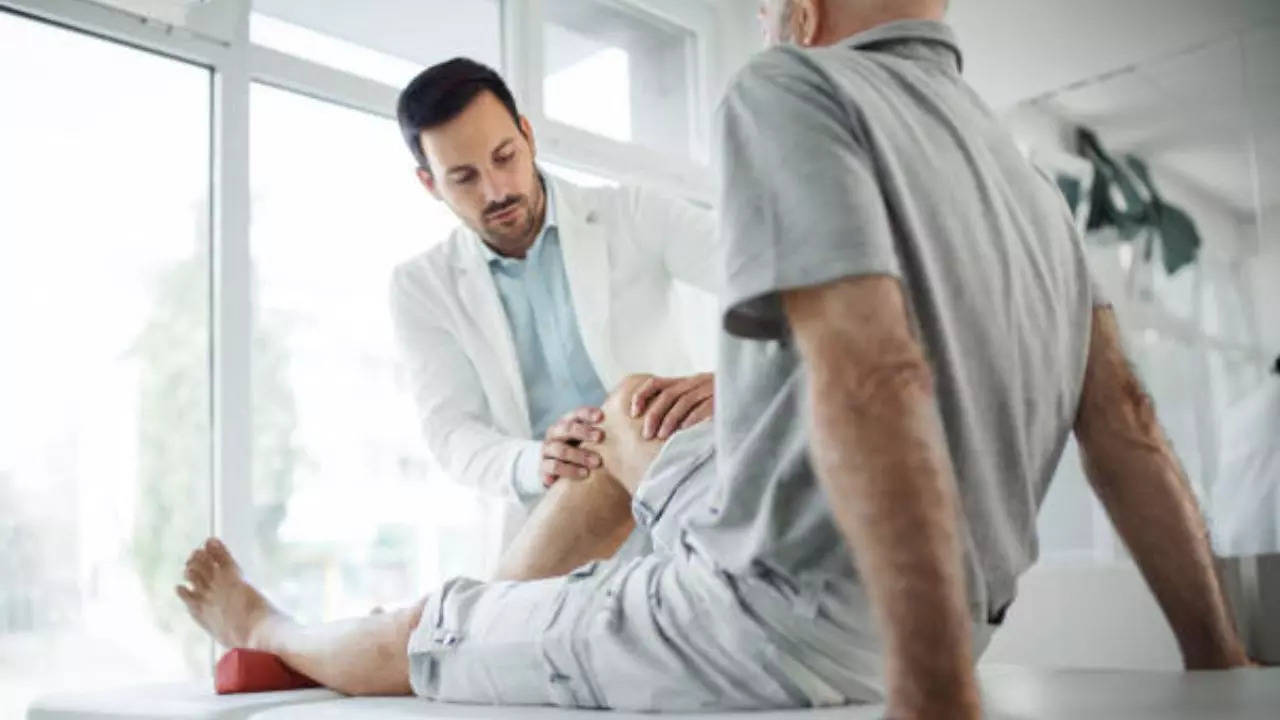
Knee arthritis can be painful and severe, but regular exercise can ease the pain, increase the range of motion, and help decrease stiffness. Certain exercises, when performed correctly, can strengthen the muscles surrounding your knees, giving them support and lessening the strain on the joint. But which exercises are most suitable? What is the right way to do it? We got in touch with Dr Akhilesh Yadav, Associate Director- Orthopaedics and Joint Replacement, Max Hospital Vaishali who shares easy yet effective exercises along with the proper techniques and the right way to do it.
1. Strengthening the Quadriceps with Quad Sets
The quadriceps muscles at the front of your thighs are essential for knee support. Strengthening them can reduce your knees' pressure.
How to carry it out:
– With your legs out in front of you, sit on the floor.
– Push the rear of your knee down toward the floor to tighten the muscles at the front of your thigh.
– After five seconds of holding the contraction, release it.
For each leg, do this ten to fifteen times.
The proper method is:
– Just lightly press your knee onto the ground; don't strain it.
– Aim to maintain a straight back and refrain from slouching.
– To stay stable and in balance, do this exercise on both legs.
2. Leg Raises
This exercise helps to develop the hip and quadriceps muscles without overly straining the knee joint.
How to carry it out:
– Legs should be straight and one bent while you are resting on your back.
– Tighten the muscles in your thighs and raise your straight leg slowly, about 6 to 12 inches off the ground.
– After holding it for five seconds, carefully lower it back down.
– For each leg, repeat 10–15 times.
The proper method is:
– Keep your actions deliberate and slow.
– When elevating your leg, try not to arch your lower back; instead, keep your back flat on the floor.
– Throughout the workout, breathe properly to prevent excessive stress.
3. Hamstrings Curls
The hamstrings, located at the back of your thighs, play a key role in supporting your knees. Strengthening them can help reduce pressure on your knees.
How to carry it out:
– Lean forward and balance yourself by grabbing onto a chair or wall.
– With your heel pointing toward your buttocks, slowly bend one knee.
– Before lowering your leg back down, hold this stance for a short while.
– Repeat each leg ten to fifteen times.
The proper method is:
– Curling your leg should not cause you to arch your back.
– Lift and drop your leg with gentle movements; avoid jerky ones.
– To preserve balance and prevent putting undue tension on other muscles, keep your supporting leg slightly bent.
4. Wall Sits
Wall sits are a great low-impact workout to strengthen your glutes and thighs, which can stabilize your knee joint.
How to carry it out:
– Place your feet shoulder-width apart, about two feet away from the wall, and stand with your back to the wall.
– As you slowly descend the wall, pretending to be seated in an unseen chair, bend your knees to about a 90-degree angle.
– Slide back up after holding this position for ten to fifteen seconds.
Repeat 5–10 times.
The proper method is:
– Make sure that when you sit, your knees don't go past your toes.
– It is best to keep your back tightly against the wall to spare your lower back from strain.
– Start with shorter holds if you experience any discomfort and increase the time gradually.
5. Step-Ups
Step-ups simulate stair climbing, which helps strengthen the muscles surrounding the knee.
The proper way to do it:
– Look for a low step or platform.
– Lift one leg and bring the other up to meet it.
– With the same leg, take a step back down.
– On each side, repeat 10–15 times.
How to do it properly:
– To save your knees from getting too stressed, use a platform that is no higher than 6–8 inches.
– Avoid hurting yourself by moving quickly; take your time and move carefully.
– When you take steps up and down, be sure your knees and toes are in line.
Tips For Working Out with Arthritic Knees
– Warm-Up: Always begin with a short, easy warm-up, such as ten minutes of walking. This lessens stiffness and improves blood flow to the muscles.
– Stretching: To increase flexibility and reduce stiffness, stretch your calves, hamstrings, and quadriceps after working out.
– Pay Attention to Your Body: If an exercise produces sudden, intense discomfort, stop right away and see a physical therapist. Severe pain is a warning to halt; mild discomfort is OK.
– Consistency: Try to complete three to four of these workouts per week. Over time, consistency will yield greater outcomes.
– Low-Impact Aerobic Exercises: Take into account adding low-impact aerobic workouts such as water aerobics, cycling, or swimming. These exercises strengthen your heart without putting additional strain on your knees.

